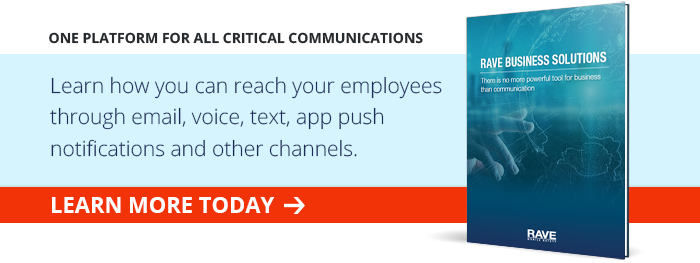Mental Health Awareness Month is an Opportunity for Companies to Invest More in Trauma Programs
Updated 5/3/22
According to an AP-NORC survey conducted in 2021, 19% of the population reported having lost a close friend or relative due to the coronavirus pandemic. To expand that statistic into numbers, more than 62 million people around the country have grieved – or are still grieving – the loss of a loved one. In 2003, a study was conducted to calculate the cost of lost productive work time among U.S. workers with depression. At the time researchers estimated the two-week prevalence of any depressive disorder in the U.S. workforce was 9.4%, with an estimated loss of 200 million workdays each year (through both absenteeism and presenteeism) at a cost to companies of $44 billion.
If you take the figures from the 2003 study, double them to account for the 19% of the population who have lost a loved one to coronavirus, and adjust the figures for inflation since 2003 (+44%), the number of lost workdays increases to 400 million at a cost to companies of $126 billion. However, in most cases, grieving continues much longer than two weeks, so the real cost is likely much higher.
Past Trauma is a Major Contributor to Mental Health Issues
Research conducted by Mental Health America last year found that past trauma is the second most common cause of mental distress after loneliness – a factor that has been in many people’s lives during the coronavirus pandemic – and that people who experience past trauma are three times more likely to experience depression. The loss of a loved one was categorized as a big “T” trauma.
Little “t” traumas can also affect productivity at work. According to Fortune.com, Americans are grieving less fatal but still meaningful losses such as postponed weddings, cancelled vacations, and “the death of our previous lives”. According to one contributor to the article, “We know that grief upon grief upon grief, in this time of isolation, brings about trauma and very, very high anxiety”.
Many Companies Already have Trauma and Bereavement Programs
Evidence to suggest a correlation between grief and productivity loss has been around since the days of the Cadburys, the Levers, and Andrew Carnegie. These “philanthrocapitalists” understood that a happier workforce led to increased loyalty, productivity, and profits, and that employees with good physical and mental health didn’t get sick as often and had no reason to look for another job.
Lessons learned in the 19th Century have not been lost on modern day enterprises. Many big companies (i.e., Facebook, Mastercard, Uber, U.S. Bank, etc.) have trauma and bereavement programs in which employees can take paid time off to grieve for the loss of a loved one. Some programs even provide grieve counsellors or subsidies towards the cost of counseling.
Could More be Done to Support Traumatized and Bereaved Employees?
This is a difficult question to answer because different employees grieve in different ways for different periods of time and therefore some will need more support than others. Companies such as Facebook have got it right inasmuch as they allow employees to divide up to twenty days paid bereavement leave as they need it, but not every trauma program is as flexible as Facebook’s.
Furthermore, who qualifies for trauma support? Should an employee who has had their wedding postponed expect as much support as an employee whose partner has died? What about those suffering from Post Covid Stress Disorder – the accumulated psychological impact of isolation, fear, and depression without an individual causal trauma? Surely these employees need support too.
How to Identify Who Needs Support and What Level of Support to Provide
Employees are not the only victims of the coronavirus pandemic. Many companies have suffered significant losses or incurred costs due to the switch to remote working or maintaining a safe workplace. Consequently, the resources may not exist for some companies to identify which employees need support and what level of support to provide.
One way to overcome this issue is with a daily poll to determine the mental health of employees. This can be a simple text message sent every morning, asking employees questions that may not directly relate to trauma or grief (because they may not be answered truthfully), but that – depending on the answers – be indicators of a mental health issue that needs addressing.
May is Mental Health Awareness Month
Although any time is a good time for companies to invest more in trauma programs, this month – Mental Health Awareness Month – is a particularly relevant time to rethink trauma and bereavement programs and introduce tools that can quickly identify employees in need of support and provide the support they need. With Smart911, you can provide 9-1-1 call takers and first responders critical information you want them to know in any kind of emergency.
When you call 9-1-1, your Smart911 Safety Profile displays on the 9-1-1 screen and the 9-1-1 call takers can view your addresses, medical information, home information, description of pets and vehicles, emergency contacts, and critical mental health conditions. You can provide as much or as little information as you like.
Due to the ongoing coronavirus pandemic, the theme for 2022 Mental Health Awareness Month is the same as last year’s – “#BacktoBasics” – and Mental Health America has produced an updated toolkit which includes tools, posters, and resources for employers to promote mental health wellness in the workplace.
You can download the #BacktoBasics toolkit free of charge from the Mental Health America website; or, if you would like further information about daily SMS polls, do not hesitate to get in touch. Our team of corporate safety professionals will be happy to demonstrate how easy it is to set up and send a Q&A Poll using Rave Alert’s geo-polling capabilities.





